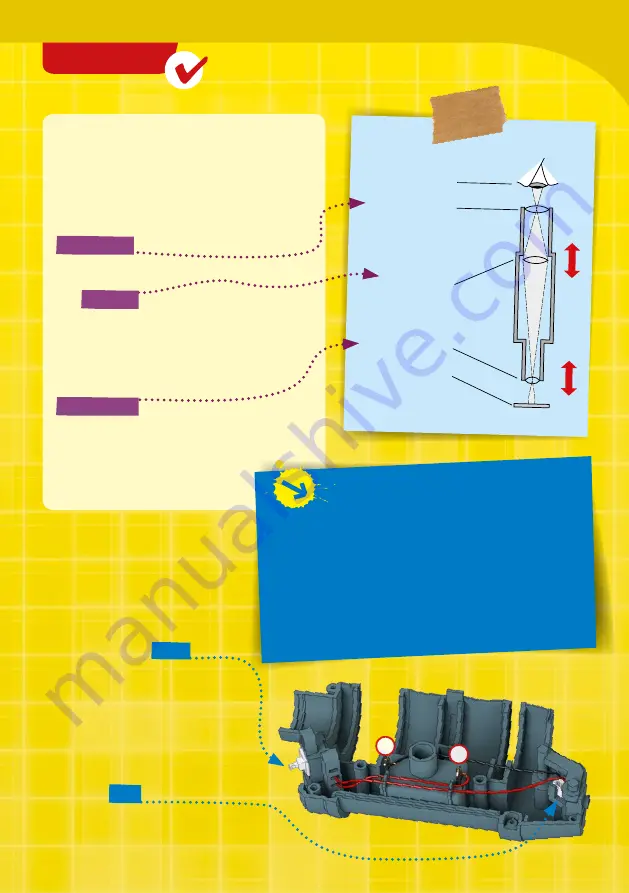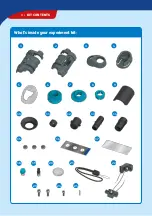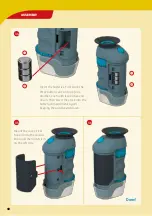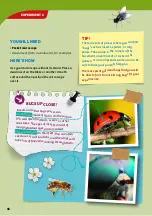
Eye
Eyepiece lens
Relay lens
Objective lens
Object
DID YOU KNOW?
An instrument that has at least a 40-fold
magnification is called a
microscope.
Lower levels of
magnification are often called
“macroscopic.”
Both
words are based on Greek roots. “Mikros” m
eans
small, and “makros” means large. In eith
er case, what
it means is that small things can be seen a
s if they
were noticeably larger.
+
-
Light path
In putting together your microscope, you
assembled the various lenses and their
sleeves into a so-called “optical path.” The
eyepiece lens
sits fixed at the upper end. This
is what your eye looks through.
The
relay lens
can be moved up and down
with the zoom adjustment ring. It lets you
switch between a low level of magnification
(20 times) and high magnification (40 times).
The focus adjustment ring moves the
objective lens.
That adjusts the distance from
the object in a way that lets you focus the
image.
Circuit
When you installed the wires and
electronic components, you built a
circuit. From the positive terminal
of the battery compartment, the
red wire goes to the
switch
and
then to the illumination unit, where
the LED bulb is installed. From the bulb,
the black wire leads to the negative
terminal of the battery compartment.
When batteries are inserted and the
switch is turned on, the circuit is closed.
The current flows from the batteries
through the
light,
and the LED lights up.
If the switch is pushed again, the circuit
is interrupted. Then the light goes out.
NACHGEHAKT
CHECK IT OUT
Pocket Microscope
11

























